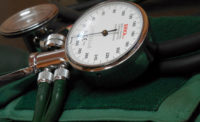 With much of the nation baking under extreme temperatures, OSHA chief Dr. David Michaels took to the blogosphere to issue a renewed call for heat safety.
With much of the nation baking under extreme temperatures, OSHA chief Dr. David Michaels took to the blogosphere to issue a renewed call for heat safety.
“Workers who are outside – construction workers, farmworkers, landscapers, roofers, baggage handlers, and others – are facing some brutal conditions out there, conditions that can do far more damage than just make us uncomfortable,” Michaels writes on the Department of Labor’s (DOL) official blog, Work in Progress. “High heat can cause body temperature to rise to dangerous levels if precautions are not taken. Heat illnesses range from heat rash and heat cramps to heat exhaustion and heat stroke. Heat stroke can result in death. I want to make sure that everyone understands the basic precautions necessary to keep from getting sick or worse.”
Michaels said the Department of Labor and the National Weather Service have asked meteorologists and weather broadcasters to “help us save workers’ lives” by warning them of the hazards of extreme heat on the job.
“We also want to expand the public’s awareness of the groups who are at higher risk in a heat wave like this. During heat waves we worry about the elderly, people who live alone, the homeless, and others. It’s time to make outdoor workers a part of that group.”
Michaels said these early days of summer are especially dangerous, because the body has not yet accIimatized to heat. Workers who are starting new outdoor jobs or workers who aren’t used to this kind of heat are at higher risk for heat illnesses.
He urged employers of outdoor workers, take heat warnings seriously. That includes providing workers with regular access to water so they can stay hydrated, scheduling break periods in the shade or indoors and training workers on the signs of heat illness—and what to do if they see a co-worker showing signs of dehydration or heat stroke.
OSHA has created a Heat Safety Tool for smartphones on the Apple and Android platforms that can calculate the heat index in your location and deliver site-specific information about your risks, and it can tell you what steps to take to keep cool.
Click here to read the complete blog post.






